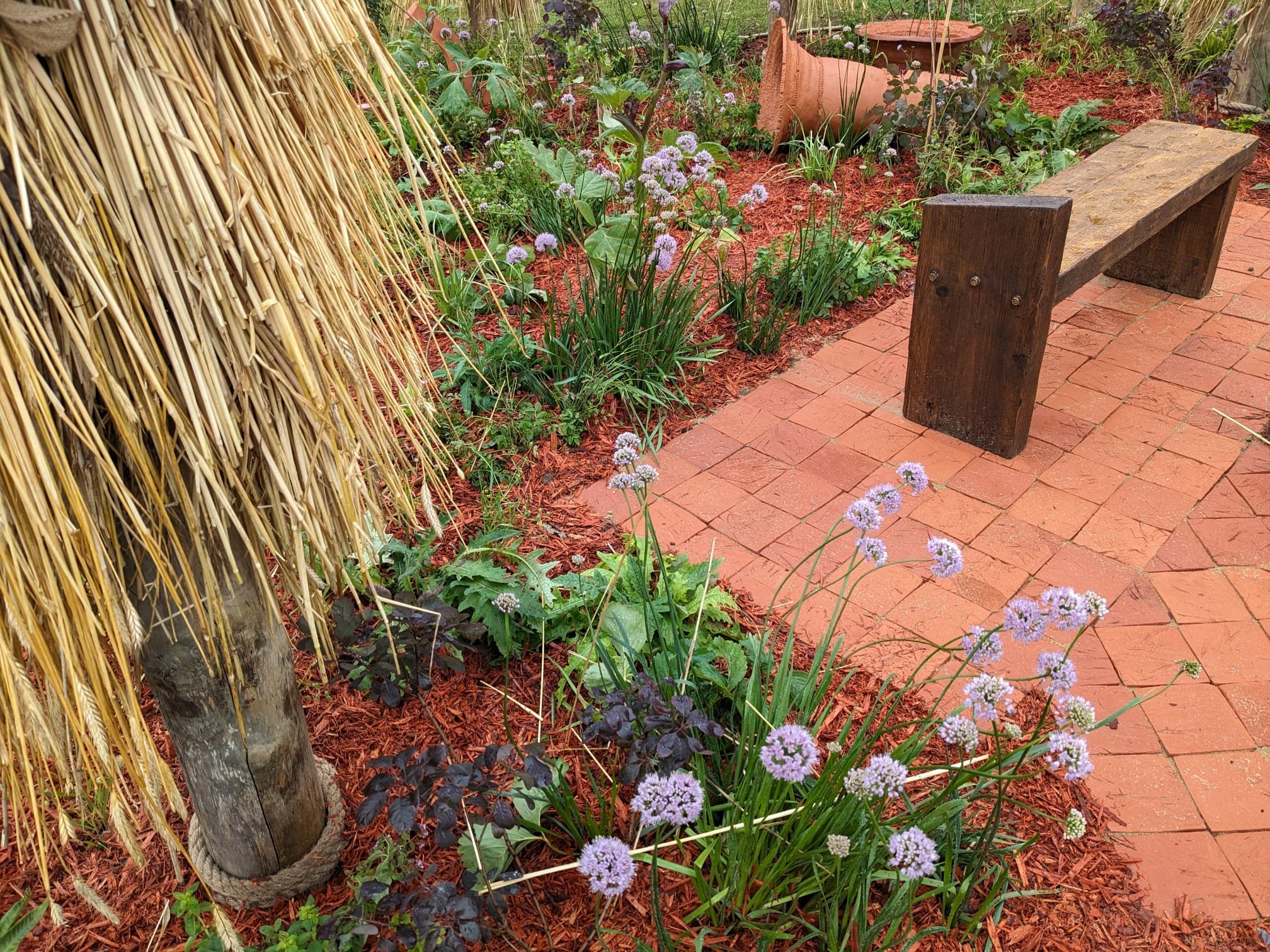The inspiration behind this garden design is a cross-continental journey that draws attention to the ties between natural and cultivated landscapes. In other words, the garden looks at the beauty in both the natural and ‘processed’ environment. The garden is designed to explore the use of some perhaps overlooked aspects of horticulture and agriculture, exhibiting these two worlds together in one space.
The world is experiencing a biodiversity crisis as industrialised monoculture fields damage many areas of native plant species and the animals that depend on them. There is an opportunity within farmed land to cultivate biodiversity through planting of species that have more variation, that are non-harvested but support healthy food production through pollination, creating micro-organisms in the soil, water-purification and nutrient cycling etc. In that sense the garden represents a small portion on the edge of agricultural land, where the diversity of wild nature and crops exist harmoniously.
The garden is entitled The Straw, the Coal and the Bean. The title is a fable by the Brothers Grimm about three inanimate objects that spring to life. The name represents three key ideas in the garden; Straw, clay from a kiln represented by the heated Coal, and the Bean which represents the seed and life of the plants.
Inspiration is taken from Japan, where rice fields are harvested, the plants are dried out on wood poles rooted into the ground through a process known as ‘Honnyo’ . Straw itself carries special spiritual connotations, for example in the Shinto region, straw can be found in shrines outside homes. It is also used commonly as a sculptural material in Japanese Art. These framing structures have an accidental beauty that is perhaps not normally associated with agricultural environments.
In this garden design these straw poles create a boundary, and inside are a vibrant mixture of plants. The diverse range of plants is made up of drought-tolerant plants, edibles, and wildlife-friendly plants that both improve the soil and bring in pollinators and insects into the garden. Plants such as Alliums, Briza Maxima, Gooseberries, Origanum Vulgare and Angelica Gigas are used for this purpose.
On the ground is a clay tile pathway. The tiles have had straw pressed into them before the bisque firing process. And between the plants are three clay sculptures that sit on the ground, that take inspiration from agricultural tools and machinery. Clay is another material that is from the earth, but that can be formed and manipulated by the human hand. It adds to the red palette of the garden, along with a scattering of red/brown mulch across the garden surface










